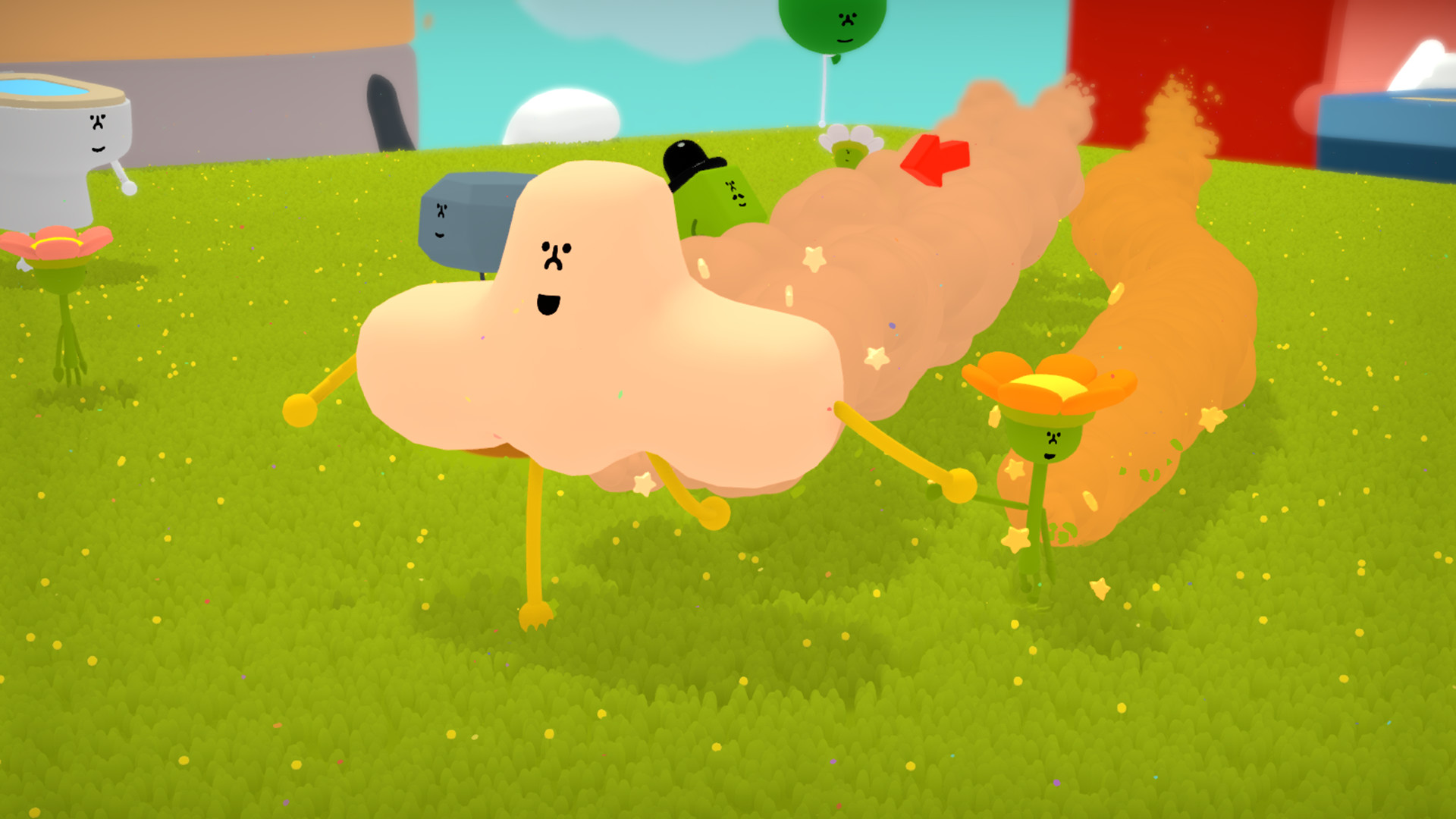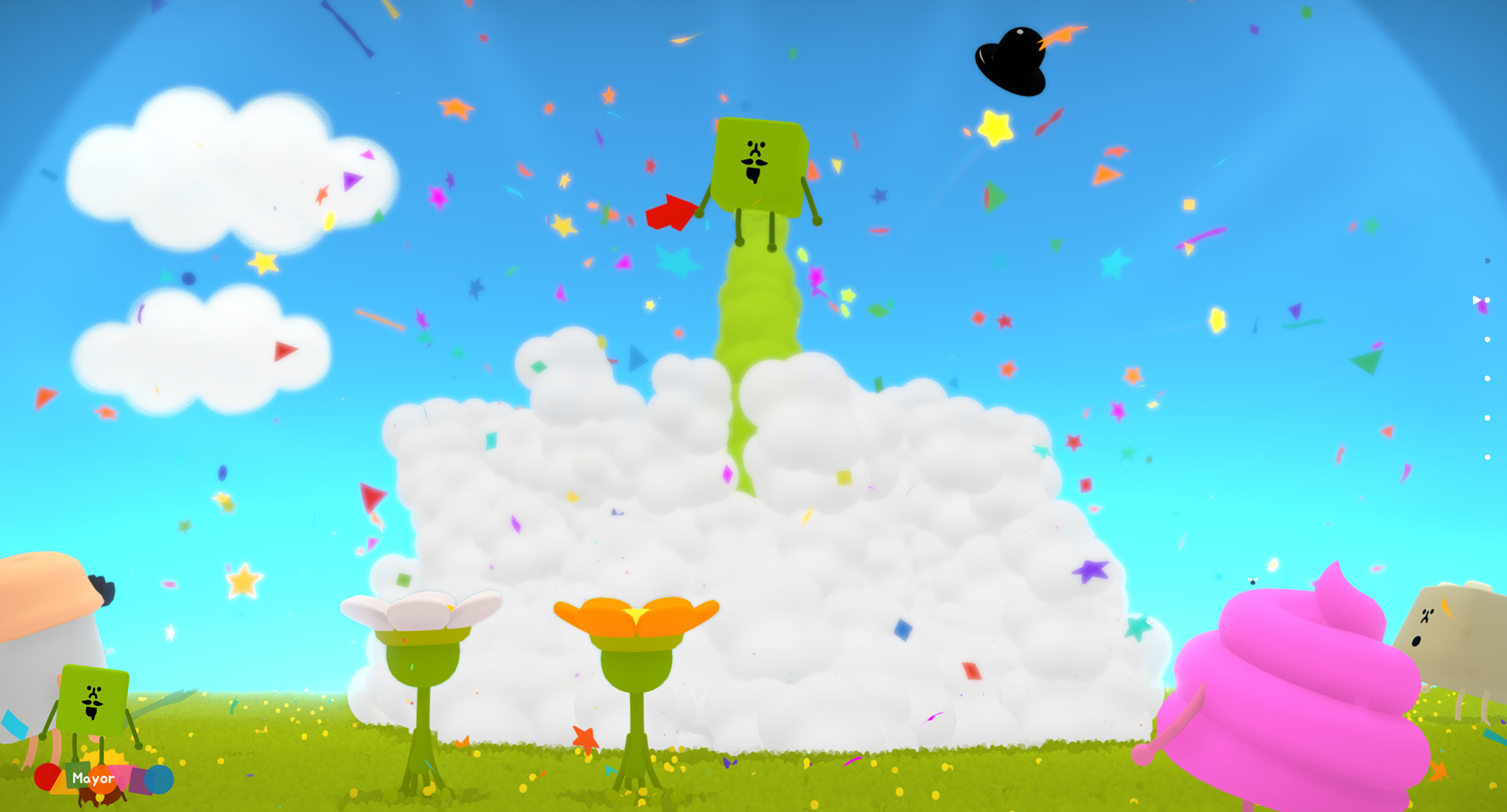Love and poop in Keita Takahashi's Wattam
In Katamari, Keita Takahashi rolled up the world. In Wattam, he’s trying to make sense of it.

This is part five of a five-part series exploring PC gaming in Japan. The features originally ran in issue 335 of PC Gamer UK. We'll be publishing a new one each day this week, so be sure to come back for more of Wes' roadtrip.
Keita Takahashi doesn’t really want his award. The creator of Katamari Damacy takes the steps up to Bitsummit’s stage reluctantly and bows his head for a medal from Dengeki PlayStation magazine, which picked his game Wattam for a best-in-show award as Bitsummit draws to a close. It’s hard to tell if his aversion to the spotlight is just shyness, but after talking to Keita Takahashi, I’m not surprised to hear him say exactly what he thinks.
“Actually, I do a column in Dengeki PlayStation, so it looks a bit fishy that I’m getting an award from that magazine,” he says. “I’m kind of happy to get an award, but not necessarily happy to get it from them. Still, thank you very much.” When we talk he’s just as blunt, but with the kind of mirthful laugh that radiates from the good-heartedness at the centre of his very strange games. His new game, Wattam, has been in development for five years, surviving a cancelation from Sony that left Takahashi to pick up the pieces and start over with a new team. It’s finally coming to Steam in 2019. Dengeki Playstation picked Wattam, their speaker said, because everyone who played it or watched it smiled and laughed, and while I don’t necessarily think Keita Takahashi is trying to save the world through videogames, I think he is searching for truth and connection with Wattam. It is a heart laid bare.
Then again, the first thing he tells me about Wattam is that you can eat food and make a poop. “Toilet loves poop,” he says. “Toilet wants to flush them.” We’ll get to the profound stuff a few minutes later.
In Wattam you can control something like 100 characters, including a tree or a poop or a toilet, and they all interact with one another in different ways. Cry, and your tears can water a flower to make it grow. Bring characters together and they’ll smile and hold hands, dancing in a circle. “I just wanted to make a videogame where the people in the game are all different, but somehow help and work together and get over the differences, and have fun,” Takahashi says. While indie development in Japan is still slowly finding its footing, Keita Takahashi did something even harder. He left Japan, moving first to Vancouver and then to San Francisco. That move inspired Wattam. In Vancouver he worked in a multicultural office for the first time, watching people from all over the world collaborate in English.
“People can work together and get over their differences and make something new. That’s great,” he says. “But at the same time, we still have so many issues. War. Fights. Frictions. Those are made by the differences, the different perspectives of religion or country or skin colour. That sucks. But if we all were the same type of people, the world would get so boring. If all people were Asian, talking the same language, doing the same culture, it may be useful, but I don’t think that’s nice. The differences make us very rich and deep. But at the same time, there is that divide.”
Language is no barrier
To express that in Wattam, your characters at first speak only in one language. When you travel to a new world, the characters there will speak another language, like Russian or Korean. “But after you have fun with them, make an explosion with them,” Takahashi waves his arms and mimics Wattam’s sound effects, “after that, when they say ‘Hi’ in a different language, it doesn’t matter.
Keep up to date with the most important stories and the best deals, as picked by the PC Gamer team.
“I just wanted to make a videogame where the people in the game are all different, but somehow help and work together and get over the differences, and have fun.”
I can’t think of a game we need more in 2019, or a better representation of Bitsummit’s indie spirit—although, ironically, Wattam is only the game it is because Keita Takahashi doesn’t care about indie development in Japan, or Steam, or what any other game developers are doing. “I’m so sorry. I don’t care about the game industry,” he tells me, laughing, a little embarrassed. “Why do I have to care about the industry or any trend? I don’t know what an indie game is. I don’t even know what a videogame is. I don’t know what a toy is.
“Sometimes an interviewer asks me about the difference between a toy and a videogame. ‘Why does my game feel more like a toy than a game?’ I always say ‘I don’t know, I don’t care about that. I just want to make a fun thing’.”

Wes has been covering games and hardware for more than 10 years, first at tech sites like The Wirecutter and Tested before joining the PC Gamer team in 2014. Wes plays a little bit of everything, but he'll always jump at the chance to cover emulation and Japanese games.
When he's not obsessively optimizing and re-optimizing a tangle of conveyor belts in Satisfactory (it's really becoming a problem), he's probably playing a 20-year-old Final Fantasy or some opaque ASCII roguelike. With a focus on writing and editing features, he seeks out personal stories and in-depth histories from the corners of PC gaming and its niche communities. 50% pizza by volume (deep dish, to be specific).


